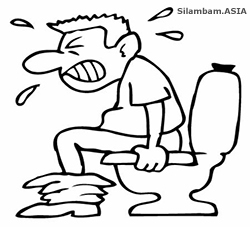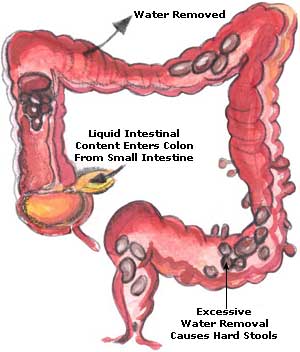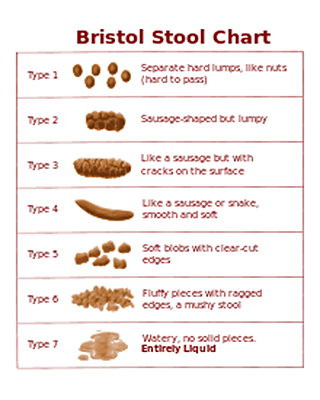Constipation
Published: 14 June 2016 (Tue)
Last Updated: 17 November 2023 04:30 AM (GMT+8)

Bahasa Melayu : Sembelit / Malayalam : മലക്കെട്ട് (Malakkettu) ; കോഷ്ഠബന്ധം (Koshdabandham) ; മലബന്ധം (Malabandham) ; ഗുദാവര്ത്തം (Gudhaavarththam); ഗുദഗ്രഹം (Gudhagraham) / Telugu : మల బద్ధకం (Mala bad'dhakaṁ) / Français : Constipation
Constipation Treatment
VIDEO - HOME REMEDIES

Natural home remedy using lemon and salt:
1. Take 1 glass lukewarm water
2. Squeeze ½ lemon in it
3. Add 1 tsp salt
4. Mix well
5. Drink every morning on an empty stomach
Natural home remedy using isabgol:
1. Take 1 glass warm water
2. Add 1 tbsp isabgol, an Ayurvedic herb
3. Mix well
4. Drink at bedtime
Natural home remedy using fennel seed powder:
1. Take 1 glass warm water
2. Add ½ tsp fennel seed powder
3. Mix well
4. Drink at bedtime
Constipation Home Remedies & Natural Treatment

Referring to movements of bowel that are irregular and involves difficulty or hardness in passing, constipation is one of the indications pertaining to certain physiological conditions. The causes of constipation include obstruction in the digestive passage or 'hypo mobility' in the colonic transfer. While lower mobility in colonic transfer may be attributed diet, side effects of medication and other hormonal factors; constipation on account of obstruction is caused by the presence of mechanical resistance on the way to defection.
Home Remedies for Constipation through Natural Treatment

Given below are some home remedies for constipation. Most of these constipation treatment tips given here are natural treatment methods are are found to be very effective in curing constipation.
■ With dietary causes being the most common factor with regard to constipation, a proper diet insisting on fiber intake can contribute to the hypo mobility in the colonic transfer. A healthy diet consisting of cereals, beans, peas and a substantial amount of green and leafy vegetable can help ease the troubles of constipation.
■ Regular intake of fruit juice or any other citrus fruits such as melon, oranges, sweet lime and even the non citrus one like cucumber help in clearing the bowel.
■ Sometimes the lack of water in the physiological system leads to constipation. So in order to cure the system sufficient amount of water intake is necessary so that the waste material may be flushed out of it.
■ At least twenty to thirty grams of fiber should be a part of regular diet in order to prevent constipation. Make sure to include salads and item based on sprouts in your daily diet.
■ Lack of physical activities also leads to constipation. Thus in case you are prone to a sedentary life style regular work outs and exercise are necessary to curb constipation.
■ Certain fruits such as pear, guava, orange, grapes and figs have distinctive benefits in aiding bowel movement.
■ It is also told that half a papaya eaten at breakfast acts as a suitable laxative.
■ As part of your early morning regime half a lime squeezed into a glass filled with warm water will work wonders for constipation.
■ Linseed swallowed with water before meals also serves to provide the required roughage in clearing constipation.
■ Drinking water stored in metallic container is known to influence the smooth passage of bowels.
■ Similarly regular intake of hot water at bedtime has been said to be similarly effective in cleaning bowels.
■ Rather than going for refined cereals whole grained ones and one with brans should be opted for as part of one's breakfast. Refined flour, non- brown bread, cakes and pastries should be strictly avoided because these aid constipation.
■ Food should be eaten with ease and irregular or meals taken in a hurry should be avoided.
■ Sometimes over dependence on purgative also leads to constipation in children. In pace of such chemical means natural means of cure should be resorted to. Banana helps to ease constipation. Fruit juices and banana can be included in their breakfast. Milk which aids excretory movements can also be included in ones diet.
■ Naturally extracted juice of half a cabbage is also useful for clearing bowels.
■ Molasses are also known to be similarly useful; but in order to avoid their strong flavor two spoons full may be added to milk.
■ Deseeded grapes boiled in milk serve to be doubly useful if taken at bedtime. While you may drink the cup or glass of milk, grapes may be chewed and consumed.
■ An amalgam of carrot and spinach juice works wonder for facilitating easy bowel movement. Besides their ease in preparation, regular intake of a glass filled with the same is nutritious as well.
■ Mango is another of your fruit options which facilitates easy movements of bowels. Similarly regular intake of more easily available guava is equally effective in adding to bowel movements.
■ An Indian herb by the name of 'triphala' is supposed to be equally helpful if two tablespoons of the said powder is added to be drunk with milk.
■ Similarly one teaspoons of dried peaches drunk with milk can also be similarly useful.
■ Combination of hot milk and honey taken either at bed time or early in the morning leads to easing of constipation.
■ Early dinner and moderate walk out followed by it also leads to similar benefits because walking helps to tone muscular functioning.
■ For a person chronically affected by constipation, homemade syrup prepared out of water and fennel seeds may prove to be handy. Regular intake of the resulting mixture will lead to the desired flush out.
Care should be taken to ascertain the underlying cause of constipation. Sometimes colitis, tumor, improper liver functioning and diabetes also contribute to constipation. Thus the underlying source should be given dire medical attention before taking recourse to natural means. Constipation on account of obstructive physiological conditions may not necessarily be cured by the natural mechanisms of herbs and diet.
